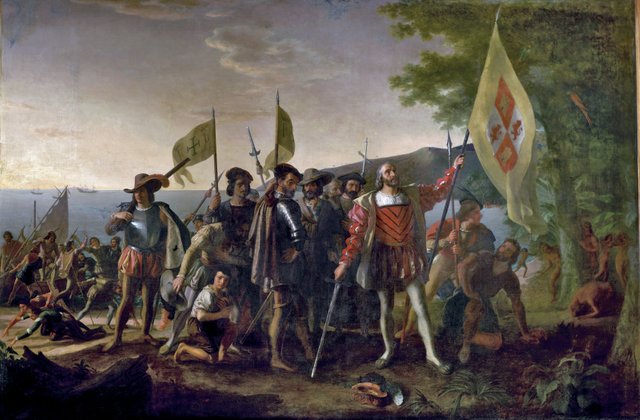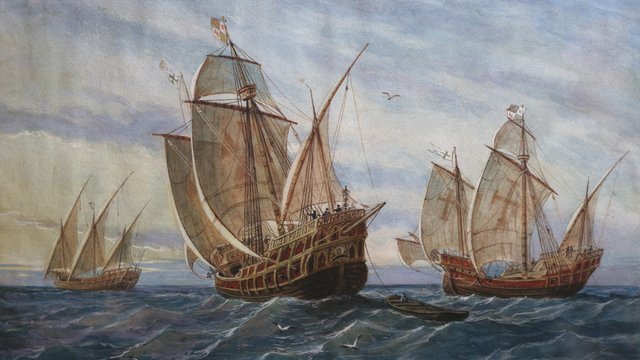Christopher Columbus History
A man of feelings, Christopher Columbus utilized his solid character to convince rulers and researchers to ignore the acknowledged hypotheses about the size of the Earth to look out for another course to Asia. In spite of the fact that he wasn't the primary European to track down the American landmass (that qualification goes to Viking Leif Ericson), his excursions opened up the exchange of merchandise and thoughts between the two grounds.
Brought into the world by the ocean
Brought into the world in 1451 to Domenico and Susanna (Fontanarossa), youthful Christopher experienced childhood in Genoa, Italy. While living in Spain in later years, he passed by Cristóbal Colón as opposed to his given name of Cristoforo Colombo. He was the most established of five, and worked intimately with his siblings in adulthood.
Situated on the northwest shoreline of Italy, Genoa was a seaport city. Columbus finished his proper schooling at an early age and started cruising on exchanging trips. According to many essays about Christopher Columbus, In 1476, he made a trip to Portugal, where he set up a mapmaking business with his sibling, Bartholomew. In 1479, he wedded Felipa Perestrello Moniz, the daughter of the legislative leader of a Portguese island. Their lone youngster, Diego, was brought into the world in 1480. Felipa passed on a couple of years after the fact. His subsequent child, Fernando, was brought into the world in 1488 to Beatriz Enriquez de Arana.
Round Earth and a course to Asia
During the 1450s, the Turkish Empire controlled northern Africa, obstructing Europe's most straightforward admittance to the important products of the Orient, like flavors. In a quest for an option in contrast to the risky and tedious land course, numerous nations turned their eyes to the ocean. Portugal specifically took incredible steps in discovering a course around the southern tip of Africa, in the end adjusting the Cape of Good Hope in 1488.
Maybe rather than revolving around the southern-extending landmass, Columbus started a mission to arrive at Asia by voyaging west. Taught individuals realized that the world was round; the approaching inquiry was, exactly how enormous was the planet?
The Greek mathematician and stargazer Eratosthenes initially determined its size around 240 BCE, and ensuing researchers had refined the number, yet it had never been demonstrated. Columbus contended that the numbers most researchers conceded to were excessively enormous, and that the immense landmass of Asia would additionally shrivel the measure of ocean travel vital. His computations set the world at 66% more modest than past gauges—appraises that were quite near the Earth's actual size.
Columbus initially introduced his arrangement to Portugal in 1483, where it was dismissed. He went on to Spain, administered mutually by the rulers Ferdinand and Isabella. The illustrious pair were occupied with driving the Muslims from Granada however they conceded him compensation and a situation in the Spanish court. Spain oversaw the southern region in January 1492; in April of that very year, Columbus' arrangement got endorsement. He started to get ready for his journey.
Niña, Pinta and Santa Maria
Columbus set forth from the Canary Islands in September 1492. He captained the caravel (a kind of Portuguese boat) known as the Santa Maria. Two different boats, the Niña and the Pinta, went with him, conveying 90 group individuals. On Oct. 12, 1492, they arrived on a little island in the Caribbean Sea that Columbus called San Salvador. (This day of his revelation is praised as Columbus Day in the United States on the second Monday of October; different nations in the Americas likewise commend it under different names.)
Sure that he had shown up in the East Indies, Columbus named the locals he met Indians. Portrayed by the Italian commander as delicate and crude, individuals were immediately abused by the Europeans.
Leaving San Salvador, the team went along the shore of Cuba and Hispaniola (where the present-day nations of Haiti and the Dominican Republic) are found. On Christmas Eve, the Santa Maria collided with a reef off of Haiti. Forty men stayed at a quickly constructed post to chase for gold when Columbus returned the Niña and Pinta to Spain to declare his prosperity. A few hostage locals were taken to demonstrate he had accomplished his objective, however various of them didn't endure the unpleasant ocean journey.
Columbus wasn't the primary European to land in the New World. Vikings had arrived at the land a few hundred years beforehand. Be that as it may, their excursions were dispersed, and expression of them never spread enough for the greater part of Europe to find out about it.
After Columbus' journey, merchandise, individuals, and thoughts were exchanged between the two mainlands.
Three additional outings
Columbus made three additional excursions to the New World over the rest of his life, looking for the terrain of Asia. On his return, he drove 17 boats with around 1,500 men back to the islands where he had been selected lead representative. They tracked down no indication of the men they had left behind a couple of brief a very long time previously. Columbus settled his organization along a few more modest fortresses along the bank of Hispaniola.
Issues immediately ejected as the homesteaders and financial backers understood that the simple gold Columbus had guaranteed didn't exist. With a limited ability to focus time, twelve of the boats, loaded up with discontented explorers, got back to Spain. Associations with the local Taino individuals turned out to be really difficult, as they opposed endeavors by the Spanish to compel them into looking for gold. With analysis of his administration of the province arriving at the ears of the rulers, Columbus got back to Spain and figured out how to effectively protect himself from the protests.
In 1498, Columbus took six boats to look for the Asian terrain south of the space he had effectively investigated. All things being equal, he discovered the shore of Venezuela. At the point when he got back to Hispaniola, he offered land to the pilgrims and allowed the subjugation of the Taino public to work it. Protests actually streamed back to Spain, and in the long run the rulers sent a chief to examine. Stunned by conditions at the state, the magistrate captured Columbus and his siblings and sent them back to Spain for preliminary examination. The siblings were delivered by the ruler and sovereign, yet Columbus was eliminated from his situation as legislative head of Hispaniola.
In 1502, Columbus put forth a final desperate effort to discover the heft of Asia. He set forth with his child Ferdinand. The organization went along the shores of Honduras, Nicaragua, Costa Rica and Panama. Two boats were stranded on the northern shore of Jamaica because of breaks, and the team was abandoned for almost a year before being safeguarded and getting back.
Columbus got back to Spain in 1504. He kicked the bucket two years after the fact, on May 20, 1506, as yet accepting he had discovered a water course to Asia.

